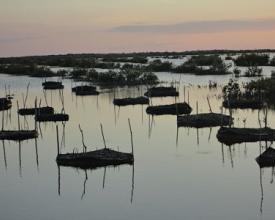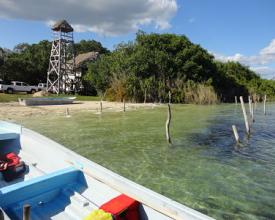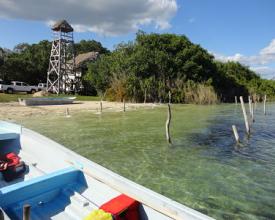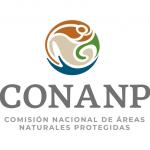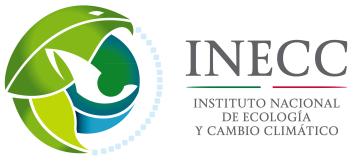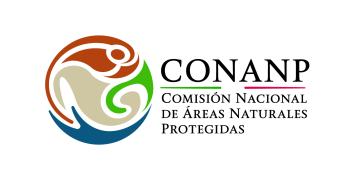
A multi-actor alliance to reduce the risks of cascading hazards in Sian Ka'an.
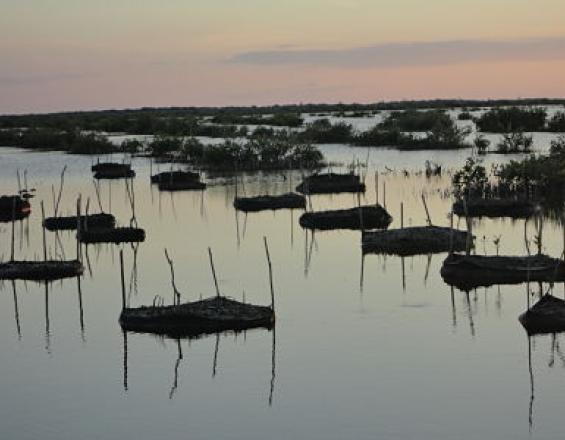
In the face of climate-related challenges, and various socioeconomic pressures in Sian Ka'an, CONANP has created an innovative multi-actor alliance to increase local adaptive capacity through an EbA strategy based on mangrove rehabilitation & income diversification. A key step was to engage farmers using targeted public financial mechanisms. CONANP has supported the fishing sector to diversify its productive activities. The academia has also played a prominent role in planning, and regulation.
Context
Challenges addressed
The maintenance of long term funding is a great challenge, if all the activities related to the rehabilitation, vigilance and monitoring of the mangroves ecosystem are to continue. Investment in staff, infrastructure and technical equipment is indispensable. To ensure that a balance between tourist activities, local livelihoods and ecosystem conservation is maintained well into the future, it is necessary to be continually communicating with, involving, and providing technical and moral support to local communities both inside and around the Sian Ka’an reserve. Rehabilitating the mangroves is not done cheaply nor quickly. One does not move machinery in and out of mangroves, nor carry rubbish out, easily. A lot of planning and resources are needed. In addition, studies are essential to be able to aid the identification of efficient rehabilitation actions.
Location
Process
Building Blocks
Increasing the resilience of alternative local ecosystems that can provide habitats to lobster species
Enabling factors
Lesson learned
Thinking “out of the sector”: Intelligently targeted payments for key actors
CONANP decided to make use of targeted payments to create a local workforce to maintain and rejuvenate the mangroves, in order to support the fishing sector. An obvious target of the payments and a source of a workforce would be that same fishing sector. However, CONANP took the unusual step of thinking “outside of the sector”, and to involve a sector not linked at all to the problem: the local agricultural communities. CONANP noted that the livelihoods of this sector are under increasing pressure from loss of markets, reduction of soil conditions, and the loss of traditional levels of precipitation as a result of climate change. On the one hand, focusing on this sector has provided an extra source of income which increases the adaptive capacity of this group in the face of changes in rainfall patterns. On the other hand, the involvement of the agricultural communities, has had the benefit of introducing the latter to the problematic and importance of the mangrove ecosystems, creating a new ally in the fight for increased resilience. In other words it has supported inter-sectoral learning and collaboration between two groups that hardly ever interact, improving the capacity for adaptation to both sectors’ different climate risks.
Enabling factors
Effective communication & awareness-raising by CONANP to generate a shared vision of the relevance of integrated mangrove ecosystem management among agricultural communities. Continued existence of financial resources to pay for the services of the agricultural communities supporting the rehabilitation of the mangroves; Knowledge and awareness of CONANP about the risks faced by the Mayan agricultural communities, and when they were in need it provided temporary employment.
Lesson learned
Be prepared to “think out of the sector” for new potential allies. Instead of focusing collaboration on the usual allies, one should consider whether there are other sectors that could be involved in the EbA measure (mangrove rehabilitation) that could benefit from being involved (through reduction in their own climate risks, and increase in sources of revenue), and in return, can promote multi-sectoral collaboration and problem solving. Financial instruments or subsidies, when mismanaged, can distort local capacities for generating and maintaining sustainable livelihoods. The continued flow of such payments is not always possible in the long-term. Therefore, it is important that such payments are not deemed an end in themselves, but are applied in a manner that is supportive, and not substitutive, of local livelihoods.
Increasing the adaptive capacity of local community fishing businesses
Enabling factors
Lesson learned
Increasing markets for local sustainable products from the mangroves
Enabling factors
Lesson learned
Realizing the entrepreneurial capacities in local housewives for adaptation to climate change
Enabling factors
Lesson learned
Evidence-based problem solving
Enabling factors
Lesson learned
Impacts
1) Local mangroves have started to be rehabilitated providing added protection to the local area against storm hazards. 2) As a result, local lobsters now count with a larger area of habitat to support their early developmental stages, thus increasing their own capacity to adapt to storm hazards. 3) Lobster fishermen have increased their adaptive capacity by being supported to diversify their livelihoods into providing sport-fishing opportunities for local tourists, not just selling lobsters to local and regional hotels. 4) Local farmers have increased their awareness about the importance of mangroves to local ecosystem health and resilience, and the farmers’ economic capacity to adapt to climate-change induced reduction in precipitation have been boosted by being involved in the payments for ecosystem services programme related to mangrove rehabilitation.
Beneficiaries
Local fishing communities. Local agricultural communities. Local women. Visitors.
Sustainable Development Goals
Story
The Biosphere Reserve of Sian Ka’an, is one of the most important biodiversity hotspots in Mexico. It is inhabited by fishing and agricultural communities. The reserve is constantly under the pressure from touristic and real estate development activities. Maintaining the geographical integrity of the reserve, and thus the benefits to locals and visitors alike, is a long-term challenge that CONANP and other partner organizations are dedicated to addressing. In terms of climate hazards, both ecosystems and local communities face cascading risks. An example is the increasing strength of tropical storms that, apart from causing damage to property and people, is causing the erosion of sand banks, which in turn damages some of the habitats necessary for lobster lifecycles. Ecosystem services provided by mangroves in the area have been weakened due to previous storms, infrastructure development and by problems of salinisation. Reducing this cascade of risks, has required innovative alliances across multiple sectors. CONANP has collaborated closely with local civil society and academia.They have created an evidence-based strategy for reducing the salinity of the mangrove system by building channels under the road that reconnected freshwater-saltwater fluxes. This was only the first step in rehabilitating the mangroves. CONANP has also promoted natural regrowth. It has built “tarquinas” – little islands of sediment entrapped in netting – that permit the growth of new mangrove trees. Corridors were then excavated to augment the natural flow of nutrients and water between the existing parts of the mangrove system. Rubbish collecting has also been carried out. Reducing vulnerability and increasing adaptive capacity has been pivotal in these efforts. CONANP employed agricultural communities to support the rehabilitation activities in the mangroves. This supports their economic wellbeing and contributes to increase their resilience to climate-change induced precipitation and harvest losses. It also reduces the pressure of extractive activities on local resources that would otherwise have occurred as a result of communities’ attempts to counter losses in harvests. For the fishing communities, CONANP supported the diversification of activities to increase their capacity to adapt to the potential reduction of lobster populations. Training, certification and mentoring has been provided. Local women are being organized and trained to manage eco-tourism businesses.

